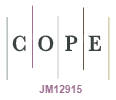NSW Aboriginal Health Promotion Program: lessons learned and ways forward
Ian Raymond A , Catriona McDonnell A and Geraldine Wilson ACentre for Aboriginal Health, NSW Ministry of Health
NSW Public Health Bulletin 23(4) 57-58 https://doi.org/10.1071/NB12067b
Published: 13 June 2012
Chronic disease is one of the most significant health issues in Aboriginal communities throughout Australia. Chronic conditions such as cardiovascular disease, diabetes, chronic respiratory disease, and cancer are responsible for 70% of the health gap (ill health and mortality) between Aboriginal and non-Aboriginal people in terms of disability adjusted life years.12
The Aboriginal Health Promotion Program was developed in 1986. The aim of the Program is to prevent the onset of chronic disease and injury in the Aboriginal population in NSW. The program has primarily administered grants to Aboriginal Community Controlled Health Services and Local Health Districts to support Aboriginal health promotion projects addressing key local and state priorities.
An example of a project funded under the program was the Shake-a-leg Program, a schools-based health promotion program targeting primary and secondary schools in the Hunter New England region. The program aimed to reduce preventable health conditions in Aboriginal children through better understanding of disease processes and prevention in the home environment. An evaluation found a noticeable change in the health behaviours of the children and increased knowledge of parents about the program.
Reviews undertaken in 2007 and 2010 recommended refocusing the Aboriginal Health Promotion Program to align with the key priorities of the National Partnership Agreement on Closing the Gap in Indigenous Health Outcomes and the National Partnership Agreement on Preventive Health. The reviews identified that a range of promising and innovative projects were being implemented under the Program but that a number of issues were affecting its overall performance and success. These issues included a lack of program logic and insufficient evaluation of health promotion interventions which could identify the impact of the projects on health gains, health outcomes and workforce capacity.
Operational Guidelines and Funding Guidelines were developed to support the implementation of the Program. These guidelines outlined specific program standards and funding requirements of the Program, and provided practical guidance on the application of these standards in the planning, design, delivery and evaluation of health promotion projects.
The Centre for Aboriginal Health conducted a series of Aboriginal health promotion capacity building workshops across NSW in 2010 which focused on program logic modelling, health promotion practice and building evidence through rigorous evaluation. The majority of those consulted during these workshops considered the current program’s funding allocations were too small and often used to fund one-off, ad hoc programs which contributed little to substantial and sustainable health improvements.
Based on the reviews and implementation experience at a strategic and operational level, the following policy questions require careful consideration if the Program is to achieve a more sustainable contribution to improve Aboriginal health outcomes. Firstly, based on a modelled cost benefit analysis of the Program, what would provide best gains from the expenditure of the Aboriginal Health Promotion Program fund? Secondly, what contribution would either targeted allocations or small and flexible funds to support local work make? Finally, should investment be targeted towards building the Aboriginal health promotion workforce including the capacity to provide interventions at the local level?
References
[1] Vos T, Barker B, Stanley L, Lopez AD. The burden of disease and injury in Aboriginal and Torres Strait Islander peoples. Brisbane: School of Population Health, The University of Queensland, 2007.[2] Zhao Y, Dempsey K. Causes of inequality in life expectancy between Indigenous and non-Indigenous people in the Northern Territory 1981–2000: a decomposition analysis. Med J Aust 2006; 184 490–4.


